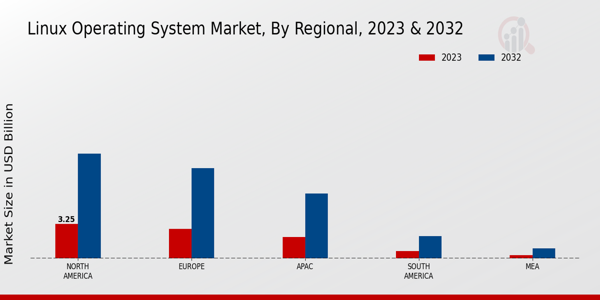The Global Linux Operating System Market has emerged as a dynamic and competitive landscape, reflecting the increasing adoption of open-source solutions across various sectors. This market benefits from the collaboration of numerous players who contribute to the development and enhancement of Linux distributions. As businesses and organizations seek reliable, scalable, and cost-effective operating systems, the demand for Linux solutions rises. The competition is primarily driven by factors such as innovation in technology, quality of customer support, the versatility of platform offerings, and strategic partnerships.
Major competitors in this market focus on enhancing user experience while ensuring compatibility across cloud environments, servers, and desktop machines. The ongoing evolution of Linux as a critical component of both enterprise solutions and individual use signifies a pivotal trend, allowing for continuous improvements and adaptations that cater to a wide array of customer needs.HP has established a significant presence in the Global Linux Operating System Market through its robust suite of hardware and software solutions tailored to various business needs.
HP's strengths in this realm include an extensive portfolio of reliable servers and workstations that are optimized for Linux performance. This compatibility facilitates seamless integration of the Linux operating system, specifically catering to enterprise applications and development operations. The company's commitment to providing comprehensive support and regular updates for its Linux offerings enhances its appeal among IT professionals seeking stability and security. Furthermore, HP's strategic focus on collaborating with open-source communities and participating in initiatives to enhance Linux functionalities adds to its credibility as a key player in this sector.
The synergy between HP's hardware and Linux solutions allows businesses to leverage the power of open-source technology while benefiting from the reliability and innovation associated with HP's branding.Canonical has emerged as a prominent entity in the Global Linux Operating System Market, primarily recognized for its flagship product, Ubuntu. The company excels in its ability to provide an intuitive user experience while delivering cutting-edge features and updates that cater to diverse user needs, from individual developers to large enterprises. Canonical's strengths lie in its commitment to the open-source movement, actively engaging with communities to foster collaboration and innovation.
The company's strong focus on cloud computing and Internet of Things (IoT) solutions positions it strategically in the market, making Ubuntu a preferred choice for a wide range of applications. Canonical's collaborative partnerships and its ability to offer comprehensive training and support enhance user confidence in its products. This proactive approach not only boosts user satisfaction but also solidifies Canonical's role as a leader in promoting the adoption of Linux-based systems across multiple industries.
























Leave a Comment